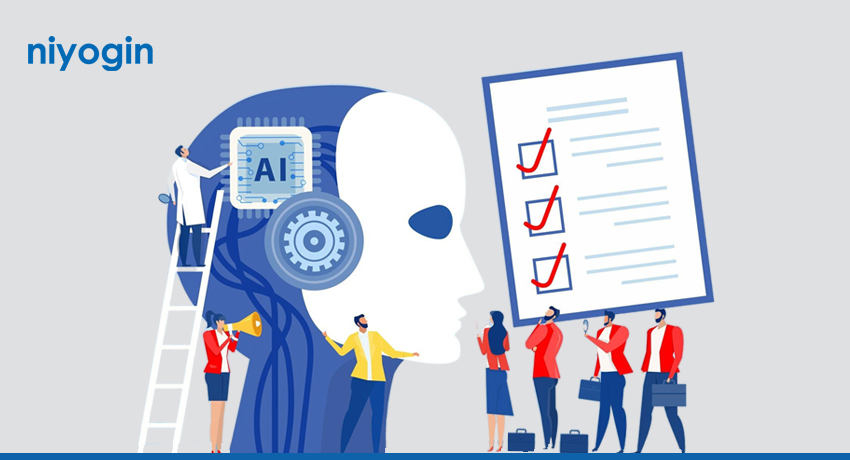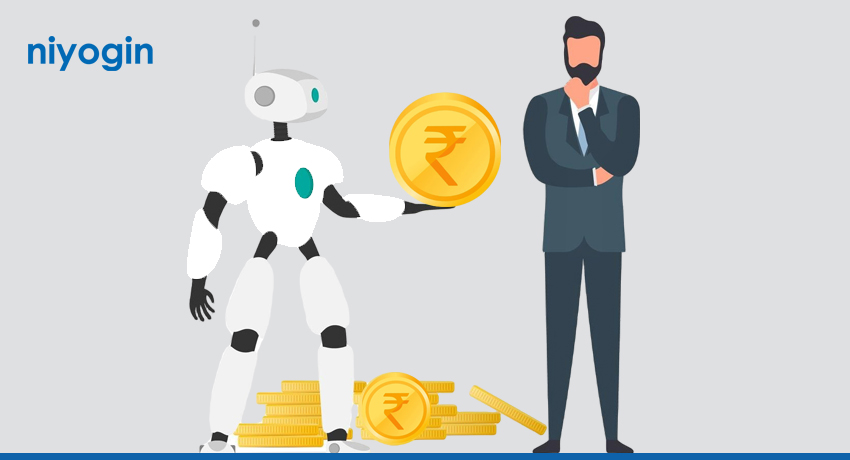India’s fintech sector stands on the brink of a Gen AI-powered revolution, prepared to unlock unprecedented levels of efficiency, innovation, and personalized experiences. However, this transformative potential is inextricably linked to a profound set of ethical dilemmas. The ethical concerns surrounding Gen AI require constant attention, from the threat of algorithmic bias aggravating already-existing inequalities to the constant danger of data breaches. A dedication to ethical AI practices is necessary to navigate this complicated terrain, guaranteeing that innovation advances the common good and creates a genuinely inclusive and equitable financial future for all Indians. 1. Data Governance and Security India’s fintech sector relies on vast amounts of personal and financial data for Gen AI-driven solutions like fraud detection and credit scoring, raising significant privacy concerns. With sensitive data involved, financial institutions must adopt robust data governance frameworks prioritizing privacy. The upcoming Indian Data Protection Bill will guide the sector, ensuring compliance to build trust. Techniques like differential privacy and federated learning can protect sensitive data, while regular audits and transparent data handling practices are essential to safeguard privacy and prevent breaches. 2. Ensuring fairness A key ethical challenge of Gen AI is algorithmic bias. AI systems trained on historical data may reflect societal inequalities, leading to biased outcomes. In India, this could impact credit scoring, disadvantaged groups like women, rural populations, or lower-income communities, furthering financial exclusion. Addressing bias is not just about fairness but also social responsibility. Indian fintech companies must proactively audit models, ensure diverse training data, and use fairness-aware algorithms. Promoting transparency in decision-making and explaining AI outcomes will help build trust and prevent discrimination. 4. Re-skilling for an AI-Driven Economy As Gen AI automates tasks like customer service and transaction monitoring, concerns about job displacement rise, particularly in India’s entry-level financial sector roles. To mitigate this, fintech companies must prioritize reskilling and upskilling initiatives. These programs can help employees transition to higher-value roles, such as AI model monitoring and data analysis, ensuring a workforce that complements AI rather than competing with it. Investing in human capital will help create a future-ready workforce. 5. Ethical Use of AI in Decision-Making Gen AI can influence key financial decisions, such as loan approvals, insurance underwriting, and investment advice. While AI’s ability to analyze vast datasets and identify patterns can improve decision-making accuracy, there is an ethical obligation to ensure these decisions are made responsibly and in the best interest of the customer. Fintechs must implement ethical guidelines that prioritize customer well-being and transparency in AI-driven decisions. This includes ensuring that AI systems are used to empower customers rather than exploit them, such as avoiding over-indebtedness through responsible lending practices. 6. Frameworks for Ethical AI Implementation India’s fintech sector is already operating within a rapidly evolving regulatory environment, with initiatives such as the Reserve Bank of India’s regulatory sandbox and the Indian Data Protection Bill providing a foundation for responsible AI integration. However, there is still a need for clear and comprehensive regulatory frameworks that address the unique challenges posed by Gen AI. The government, in collaboration with industry stakeholders, must develop policies that ensure AI is deployed responsibly across the fintech ecosystem. This includes defining clear standards for data privacy, algorithmic fairness, transparency, and accountability. By aligning regulatory policies with ethical AI principles, India can create a balanced environment that fosters innovation while protecting consumers and ensuring social good. 7. Inclusive Financial Services AI has the potential to drive greater financial inclusion, but only if it is deployed in an inclusive and equitable manner. India’s fintech sector has already made significant strides in providing services to underserved populations, including through digital wallets and micro-lending platforms. However, there is still much work to be done to ensure that AI benefits all segments of society, especially marginalized groups. Fintech companies must design their AI-driven solutions to be inclusive by tackling language barriers, enhancing access to financial services for rural populations, and offering digital literacy programs. By prioritizing inclusivity, India’s fintech industry can ensure that Gen AI does not inadvertently deepen the digital divide but instead fosters a more equitable financial landscape. While the technology holds enormous potential to enhance financial services, it is paramount to understand that it also presents significant risks that must be carefully managed. With the right frameworks in place, India has the opportunity to become a global leader in the ethical integration of AI, driving innovation while safeguarding the interests of consumers and society.
Month: January 2025
The Impact of Digital Lending on Personal Finance
The emergence of digital lending over the past decade has significantly changed the personal finance landscape. The days of having to go to a bank, fill out a ton of paperwork, stand in line, and wait for your loan to be approved are long gone. These days, thanks to smartphones and technology, you can apply for a loan with a few taps and have it approved faster than you can order a pizza. Member when applying for a loan felt like a month-long waiting game? Well, those days are gone. Digital lending platforms can approve loans in minutes, or even seconds! In India, a country of over 1.4 billion people, digital lending is booming, and the time it takes to get a loan has drastically reduced. According to Statista, the average time to approve a digital loan is now just 15 minutes compared to weeks or even months in traditional banking. No Paperwork The deluge of paperwork that once hampered loan applications has been eliminated by digital financing. Digital lending eliminates the need for paper records. Documents such as bank statements, income certificates, and identification documents can be uploaded straight from your phone. According to PwC, about 70% of Indian borrowers like digital lending because it eliminates the need for documentation. And who was to blame? Instant messaging is like a step up from snail mail! Loan Accessibility for All Traditionally, loans were often a privilege for those with an established credit history or a steady job. But digital lending is breaking down these barriers. These platforms are using innovative algorithms and AI to analyze alternative data points, such as utility bills, online shopping habits, and even social media activity, to assess creditworthiness. This means that more people especially young professionals, students, and those from underserved areas can access loans they might not have qualified for with traditional banks. NITI Aayog reports that India’s digital lending market is expected to reach ₹12 trillion by 2025, with more people than ever before being able to access financial services. Financial Inclusion and Microloans The growth of microloans is one of the most fascinating developments in digital lending. These small loans, which are frequently offered for as little as ₹500 to ₹5,000, are ideal for those who require immediate financial support but do not wish to incur long-term debt. Additionally, microloans are a potent instrument for advancing financial inclusion, particularly for marginalized sector. According to The Economic Times, microloans are currently aiding more than 100 million individuals in India by giving them access to small-scale money for everything from healthcare to education, thereby improving their quality of life. Customized Lending Consider a loan that is customized to your requirements, preferences, and hobbies. Data analytics are being used by digital lenders to customize loan offers. Digital lending platforms are suggesting loan solutions that match your financial profile, just way Netflix suggests movies based on your viewing history. For instance, you can be given a loan with better terms or cheaper interest rates if you regularly pay your payments on time. According to McKinsey & Company, 80% of consumers want individualized financial products, and digital lending is well-positioned to provide this experience. Better Loan Management Digital lending platforms assist with debt management in addition to providing loans. The dashboards on the majority of platforms are easy to use, allowing borrowers to monitor loan disbursements, repayments, and even determine their cumulative interest payments. The real fun happens when these platforms use AI to assist users in creating customized payback plans that adapt to their financial circumstances. It’s like having a personal money assistant on call all the time. The Rise of Buy Now, Pay Later The rise of Buy Now, Pay Later (BNPL) schemes is one of the most exciting trends in digital lending. BNPL allows consumers to make purchases and pay in installments, often interest-free if repaid quickly. It’s especially popular for shopping, travel, and education. A Bain & Company report predicts BNPL in India will grow 4-5 times in the coming years, transforming how consumers manage small debts. With fintech innovations, the future of personal finance is brighter, smarter, and more inclusive than ever before. So next time you need a quick loan, remember: the future of borrowing is just a click away!
Building Trust in Gen AI: A Roadmap for the Financial Industry
Generative AI is rapidly emerging as a transformative force in the financial industry, with the potential to revolutionize operations, enhance efficiency, and deliver tailored experiences to customers. From automating tasks to improving fraud detection and predictive analytics, Gen AI holds great promise. However, its successful integration into the financial sector depends heavily on building trust among stakeholders, including regulators, institutions, employees, and customers. Key Challenges and Considerations Building a Trustworthy Gen AI Ecosystem To successfully integrate Gen AI into finance, institutions must focus on several key actions to create a trustworthy ecosystem. Data Governance and Security Fairness, Accountability, and Transparency Human-Centered AI Education and Awareness Regulatory and Policy Frameworks The Indian Fintech Landscape
The Future of Digital Lending: Emerging Technologies and Innovations in India
Digital lending has fundamentally transformed the way financial institutions and borrowers engage in India. Fueled by the widespread adoption of smartphones, increased internet connectivity, and supportive government initiatives aimed at fostering digital financial inclusion, the digital lending sector has experienced remarkable growth. This shift has not only made access to credit more convenient and efficient but has also empowered underserved populations by bridging the gap between traditional banking services and emerging digital solutions. As a result, digital lending is reshaping the financial ecosystem, providing greater financial accessibility to millions of Indians. Current State of Digital Lending in India According to a report by Redseer Strategy Consultants, digital lending in India is projected to account for 5% of all retail loans by FY28, up from 1.8% in FY22. The key drivers of its growth include increasing smartphone penetration, government initiatives like Digital India and UPI, and rising demand for credit among the middle class and underserved segments. A diverse range of players, including banks, NBFCs, and fintech companies, are actively participating in the digital lending space. Emerging Technologies and Innovations Artificial Intelligence (AI) and Machine Learning (ML): AI-driven credit scoring models enhance the accuracy and efficiency of assessing borrowers’ creditworthiness by evaluating a broader spectrum of data, including social media activity and online behavior. Machine learning algorithms help detect fraudulent patterns, enabling lenders to mitigate risks and prevent losses. Additionally, AI can personalize loan offers based on individual borrowers’ preferences and financial profiles, improving the customer experience and increasing approval rates. Blockchain Technology: Offers a secure and transparent platform for recording loan transactions, significantly reducing the risk of fraud and disputes. Self-executing smart contracts automate loan origination, disbursement, and repayment, streamlining operations and reducing costs for lenders. Open Banking: Open banking facilitates the secure sharing of financial data between different institutions, enabling lenders to make more informed lending decisions. By leveraging Application Programming Interfaces (APIs), lenders can seamlessly integrate with various financial service providers, offering borrowers a wider array of products and services tailored to their needs. Biometric Authentication: Biometric authentication methods, such as fingerprint and facial recognition, enhance security by preventing identity theft. These technologies also streamline the customer onboarding process, reducing the time required for loan approvals while improving overall efficiency. Challenges, opportunities and the way forward Despite challenges, digital lending has a bright future in India. By embracing emerging technologies and addressing regulatory concerns, the industry can explore its full potential, driving financial inclusion and significantly contributing to the country’s economic growth. These challenges include ensuring data privacy and security, the establishment of a clear and supportive regulatory framework to foster innovation while protecting consumer interests, and improving financial literacy among borrowers to help them make informed borrowing and repayment decisions. The future of digital lending in India holds immense promise, fueled by these emerging technologies. These innovations are revolutionizing the lending ecosystem, enhancing efficiency, security, and customer experience. By overcoming existing challenges and capitalizing on new opportunities. India is poised to become a global leader in digital lending. This transformation will not only drive financial inclusion but also empower millions of citizens, creating a more accessible and equitable financial landscape for all.



